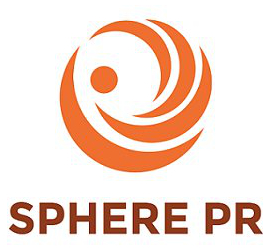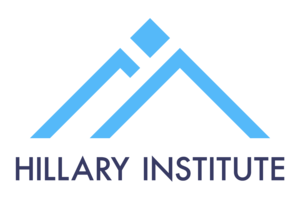Universities and Further Education colleges are embracing and combining emerging technologies like artificial intelligence (AI), virtual reality (VR) and augmented reality (AR). These innovations are reshaping the further and higher education sectors, offering more engaging, accessible, data-based learning experiences for students, educators and institutions alike.
As students and institutions seek value amidst economic and work-life challenges, these technologies are crucial in delivering sustainable and scalable skilling and workforce development goals. Integrating AI, VR, and AR can provide more personalised and cost-effective learning pathways for students facing daily pressures, making education more accessible and financially viable.
The transformative role of AI in personalised learning
AI is becoming a game-changer in education by enabling personalised learning and providing data-driven insights. AI-powered platforms can analyse the complex interplay of factors impacting student performance and customise immersive content delivery to improve persistence, resilience, and success. This integrated approach can serve personalised, springboard content that matches students' strengths, promotes growth in areas of weakness and builds both capability and confidence.
While predictive AI tools are often seen through vendor-centric lenses (Microsoft, Google, OpenAI), AI is most effective when viewed as a proactive, holistic ecosystem. When Gen AI is employed across traditionally siloed data sets and systems, the time needed to analyse student performance, identify at-risk learners, and preemptively apply interventions can be minimised. Faster, more targeted interventions can elevate the impact of each teacher’s experience and professional judgements on their student learning journey.
In this way, AI is not just about student learning; it also directly benefits teachers and professional staff. It streamlines the development of educational materials, from video and interactive content to branched lessons and adaptive learning paths.
A few higher and vocational education institutions have already demonstrated this by exploring the affordances of AI-driven platforms to offer personalised learning programs tailored to students’ career goals and development needs. For example:
- Box Hill Institute uses AI to provide personalised learning pathways and to enhance its nursing and healthcare programs.
- The University of Sydney has also implemented AI-driven learning platforms to provide personalised learning experiences.
Immersive learning through VR
Virtual reality also revolutionises further and higher education, providing immersive learning environments that make complex subjects more accessible and engaging. From medical schools to engineering programs and advanced manufacturing, VR allows students to engage with practical scenarios that realistically present workplace problems, assess skills application and assess complex tasks.
TAFE New South Wales, Australia:
- Veterinary science students study canine anatomy using VR to enrich experiences.
- Healthcare students use VR to build a patient-centric view that is critical to achieving the best health outcomes.
- Plumbing students use VR to recognise and mitigate potential workplace and occupational risks in a safe and protected environment.
TAFE Queensland, Australia:
- Welding students using VR to identify and solve potentially hazardous scenarios when preparing for welding work -
- With a screen inside the helmet, students position their virtual welding torch, with sparks flying like in real life, against a plastic board and press the torch trigger to see the welds they have made.
- The screen flashes red when they are incorrect and gives them a score at the end.
- Using AR in practical welding studies has reduced raw material wastage by 68 per cent during a period of severe construction material scarcity.
AR brings practical training to life
AR is another immersive technology revolutionising the education sector by deepening the interaction between students and their learning materials. AR overlays digital content in the real world, making abstract concepts more tangible and understandable.
For students in technical fields like anatomy or engineering, AR offers sophisticated models and dynamic visualisations that bring complex ideas to life.
AR also enables collaborative projects, where students from different locations can work together on interactive tasks. This feature can benefit geographically remote students, allowing them to engage in shared, team-based, and peer-assessed learning experiences.
AR is also broadly applicable across diverse fields such as healthcare, technical trades, and construction, allowing students to practice and refine their skills in a controlled, simulated environment. For example:
· Monash University uses AR in its engineering courses to help students visualise complex concepts and engage in interactive problem-solving.
· The University of Technology, Sydney (UTS) has a Data Arena, a 360-degree powerful immersive AR facility. Users in the arena can immerse themselves in data to observe, explore, refine, improve, discover and learn.
· Apprentice boilermakers at TAFE Queensland use AR to see digitally designed 3D imagery on top of real-life benches, workspaces and machinery.
· Medical students at TAFE NSW have an eye anatomy AR experience where they can explore detailed 3D anatomical and physiological structures.
The future of further and higher education
The future of further and higher education will likely see these advanced digital technologies integrated into the curriculum, offering new opportunities and skills for students to thrive in a competitive, tech-driven environment. Our educational institutions have a rich history of effectively using technology to further learning and teaching. Assessing and leveraging rapidly evolving tools like AR and Gen AI will ensure they remain at the forefront of global education by providing students with the relevant and engaging learning experiences they need to succeed.



 NZ Banking Association: Banks Step Up Customer Scam Protections And Compensation
NZ Banking Association: Banks Step Up Customer Scam Protections And Compensation The Reserve Bank of New Zealand: CoFR Seeking Feedback On Access To Basic Transaction Accounts
The Reserve Bank of New Zealand: CoFR Seeking Feedback On Access To Basic Transaction Accounts 2Degrees: Stop The Pings - Half Of Kiwis Overwhelmed By Notifications
2Degrees: Stop The Pings - Half Of Kiwis Overwhelmed By Notifications Electricity Networks Association: How Many More Trees Need To Fall On Power Lines Before The Rules Change?
Electricity Networks Association: How Many More Trees Need To Fall On Power Lines Before The Rules Change? Parrot Analytics: Netflix Earnings - Price Hikes With Minimal Churn | Will Netflix Be A Bright Spot For Markets?
Parrot Analytics: Netflix Earnings - Price Hikes With Minimal Churn | Will Netflix Be A Bright Spot For Markets? Canterbury Museum: Mystery Molars Lead To Discovery Of Giant Crayfish In Ancient Aotearoa New Zealand
Canterbury Museum: Mystery Molars Lead To Discovery Of Giant Crayfish In Ancient Aotearoa New Zealand



